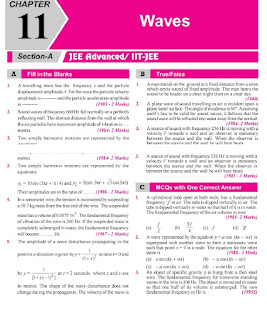POPULATION OF UNIVERSE:
An aggregate of objects under study is called population of universe. A universe containing a finite number of individuals or members is called finite universe. A universe with infinite number of members is called infinite universe.
The collection of all possible ways in which a specified event can happen is called hypothetical universe.
SAMPLING:
A finite subset of universe is called a sample. The number of individuals in a sample is sample size. The process of selecting a sample from a universe is called sampling.
PARAMETERS OF STATISTICS:
The population, mean and variance are denoted by:
For whole universe : Mean by μ and variance by σ2
For sample : Mean by x̅ and variance by s2
TEST OF SIGNIFICANCE
An important aspect of sampling theory is to study the test of significance which will enable us to decide on the basis of the result of sample if
- The variation between the observed sample statistics and the hypothetical parameter value.
- The deviation between two sample statistics is significant or might be attribute due to chance or fluctuation of the sample.
For applying the test of significance we first setup a hypothesis which is called null hypothesis and denoted by H0.
Any hypothesis which is complementary to the null hypothesis is called alternate hypothesis and denoted by H1.
CRITICAL REGION
A REGION CORRESPONDING TO STATISTICS TEAM IN A SAMPLE SPACE WHICH AMOUNTS TO REJECTION OF NULL HYPOTHESIS IS CALLED CRITICAL REGION OR REGION OF REJECTION.
THE REGION OF SAMPLE SPACE WHICH AMOUNTS TO THE ACCEPTANCE OF H0 IS CALLED ACCEPTANCE REGION.
LEVEL OF SIGNIFICANCE
The probability of the value of variance falling in the critical region is known as level of significance.
-
CHI SQUARE(Χ2) TEST
It is applicable for testing null hypothesis. For large sample size is 50 or more than it, Χ2 test is measure of corresponds between the theoretical frequency and observed frequency.
Χ2 = ∑ [(Oi – Ei)2/Ei]
where Oi is observed frequency and Ei is expected frequency.
If Χ2cal < Χ2tabular ⇒ H0 should be accepted at 5% level of significance for (n-1) degree of freedom.
Χ2cal > Χ2tabular ⇒ H0 is rejected.
Degree of Freedom(DOF): DOF is equal to total number of samples minus number of constraints.
For Binomial Distribution: DOF = n-1
For Poisson Distribution: DOF = n-2
For Normal Distribution: DOF = n-3
Frequency Distribution
There are three types of frequency distribution:
- Binomial Distribution
- Poisson Distribution
- Normal Distribution
BINOMIAL DISTRIBUTION
A random variable X has a binomial distribution if X assumes only non-negative value and its probability distribution is given by:
P(X=r) = nCr.pr.qn-r ; r = 0,1,2,3,…,n
= 0 ; otherwise
where X → number of successes in ‘n’ trial
p → probability of successes in single trial.
q → probability of failure in single trial.
∴ p + q = 1
Note:
- P(X = r) = P(r)
- Number of trials are finite
- Only two possible outcome in each trial i.e. successes or failure
- p and q are constant.
Sth moment = (x1S + x2S + x3S +….+xnS)/n
1st moment → mean
2nd moment → variance
MOMENT OF BINOMIAL DISTRIBUTION
Mean of Binomial Distribution:
μ = Σ r.P(r) = Σ r.nCr.pr.qn-r
= 0 + 1.nC1.p1.qn-1 + 2.nC2.p2.qn-2 +……+ nCn.pn
= n.p.qn-1 + 2.[n(n-1)/2!].p2.qn-2 + 3.[n(n-1).(n-2)/3!].p3.qn-3 + …… + n.pn
= n.p.qn-1 + [n(n-1)/1!].p2.qn-2 + [n(n-1).(n-2)/2!].p3.qn-3 + …… + n.pn
= n.p{qn-1 + [n(n-1)/1!].p.qn-2 + [n(n-1).(n-2)/2!].p2.qn-3 + …… + pn-1}
= n.p{n-1C0.p0.qn-1 + n-1C1.p1.qn-2 +……+ n-1Cn-1.pn-1}
= n.p.(p + q)n-1
= n.p //p + q = 1
Variance of Binomial Distribution:
σ2 = Σ r2.P(r) – μ2
= Σ [r + r(r-1)].P(r) – μ2 = Σ r.P(r) + Σ r(r-1).P(r) – μ2
= μ + Σ r(r-1).P(r) – μ2
= μ + [2.1.nC2.p2.qn-2 + 3.2.nC2.p3.qn-3 + ……+ n.(n-1
).nCn.pn] – μ2
= μ + [2.1.[n(n-1)/2!].p2.qn-2 + 3.2.[n(n-1).(n-2)/3!].p3.qn-3 + …… + n.(n-1).pn] – μ2
= μ + {[n(n-1)].p2.qn-2 + [n(n-1).(n-2)].p3.qn-3 + …… + n.(n-1).pn} – μ2
= μ + n(n-1).p2{qn-2 + (n-2).p.qn-3 + …… + pn-2] – μ2
= μ + n(n-1).p2{n-2C0qn-2 + n-2C1.p.qn-3 + …… + n-2Cn-2pn-2] – μ2
= μ + n(n-1).p2.(p + q)n-2 – μ2
= μ + n(n-1).p2 – μ2
= n.p + n(n-1).p2 – n2.p2
= n.p[1 + n.p – p – n.p] = n.p.[1 – p] = n.p.q
RECURRENCE RELATION FOR THE BINOMIAL DISTRIBUTION
P(r+1) = (n-r)/(r+1).(p/q).P(r)
POISSON DISTRIBUTION
A random variable X is said to follow a passion distribution if it assumes only non-negative value and its probability distribution is given by:
P(X=r) = (e-λ.λr)/r! ; r = 0,1,2,3,…,n
= 0 ; otherwise
where λ → positive constant = n.p
Poisson Distribution is a limiting case of binomial distribution when n is very large and p is small.
Binomial Distribution tends to Poisson distribution when n → ∞ and p → 0 such that n.p = λ is finite.
Proof:
For Poisson Distribution P(r) = nCr.pr.qn-r
n.p = λ ⇒ p = λ/n and q = 1 – λ/n
∴ P(r) = nCr.(λ/n)r.(1 – λ/n)n-r
= [n(n-1)(n-2)…..(n-r+1)/r!].(λ/n)r.(1 – λ/n)n-r
= (λr/r!).[n(n-1)(n-2)…(n-r+1)/nr].(1 – λ/n)n/1 – λ/n)r
= (λr/r!).(n/n).[(n-1)/n].[(n-2)/n]……[(n-r+1)/n].(1 – λ/n)n/1 – λ/n)r
= (λr/r!).1.[1-(1/n)].[1-(2/n)]……[1-(r+1)/n].(1 – λ/n)n/1 – λ/n)r
As n → ∞ each of (r-1) factors
[1-(1/n)].[1-(2/n)]……[1-(r+1)/n] → 1
Since lim n → ∞ [(1 + 1/x)x = e
Hence lim n → ∞ {[1 + 1/(λ/n)](-n/λ)}-λ = e-λ
P(X = r) = (e-λ.λr)/r!
Mean of Poisson Distribution:
μ = Σ r.P(r) = Σ r.(e-λ.λr)/r!
= Σ (e-λ.λr)/(r-1)!
= e-λ.Σ (λr)/(r-1)!
= e-λ.(λ + λ2/1! + λ3/2! + ….. )
= e-λ.λ(1 + λ1/1! + λ2/2! + ….. )
= λ.e-λ.eλ = λ
Variance of Poisson Distribution:
σ2 = Σ r2.P(r) – μ2
= Σ [r + r(r-1)].P(r) – μ2 = Σ r.P(r) + Σ r(r-1).P(r) – μ2
= μ + Σ r(r-1).P(r) – μ2
= μ + Σ r(r-1).(e-λ.λr)/r! – μ2
= μ + Σ (e-λ.λr)/(r-2)! – μ2
= λ – λ2 + e-λ.Σλr)/(r-2)!
= λ – λ2 + e-λ.Σλr-2+2)/(r-2)!
= λ – λ2 + e-λ.λ2.Σλr-2)/(r-2)!
= λ – λ2 + e-λ.λ2.eλ
= λ
Mean and variance of Poisson distribution are equal to parameter λ.
RECURRENCE RELATION FOR THE POISSON DISTRIBUTION
P(r+1) = λ/(r+1).P(r)
NORMAL DISTRIBUTION
A continuous random variable x is said to follow normal distribution if
f(x) = 1/[σ.√(2π)].e{-(x-μ)2/2σ2}
where -∞ < x < ∞ and -∞ < μ < ∞ and σ > 0
and f(x) → probability density function
CHARACTERISTICS OF NORMAL DISTRIBUTION:
- Here n → ∞ and p → 1/2
- Graph of Normal Distribution is called normal curve. It is symmetric about mean.
- Mean, median and mode of Normal Distribution coincide
- Since the total area under normal curve is one, the area of normal curve from x = -∞ to x = μ is 1/2 and x = μ to x = ∞ is 1/2
STANDARD FORM OF NORMAL DISTRIBUTION
If x is normal distribution random varible
then z = (x – μ)/σ with μ = 0 and σ = 1
The probability density function for normal distribution in standard form is
f(z) = 1/[σ.√(2π)].e-z2/2
PROPERTIES OF NORMAL DISTRIBUTION
Value of f(z) can be found using the table below:







